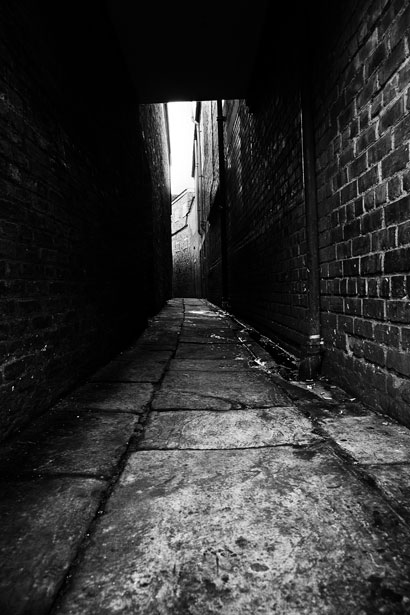Aileen Lazaro
The Street
Octavio Paz
Here is a long and silent street.
I walk in blackness and I stumble and fall
and rise, and I walk blind, my feet
trampling the silent stones and the dry leaves.
Someone behind me also tramples, stones, leaves:
if I slow down, he slows;
if I run, he runs I turn : nobody.
Everything dark and door less,
only my steps aware of me,
I turning and turning among these corners
which lead forever to the street
where nobody waits for, nobody follows me,
where I pursue a man who stumbles
and rises and says when he sees me : nobody.
The darkness of the image of the street complements the poem by because it shows the avenues and turns as depicted while also having the same sense of mystery. The unpleasant sensation of the street also connects with the sensation of the poem of being followed.
Biography of Octavio Paz
Born 1914, Octavio Paz grew up in the country of Mexico during the Civil War, and supported the republican cause. Influenced by his intellectual grandfather, Paz always had access an excellent library. Later in his life, when he was a established poet, Paz visted Paris where surrealism was a major component in literature. Throughout his life he wrote poems in both the Spanish and English language, including works like "Blanco". Towards the end of Paz's life, he received the Nobel Prize in literature.
https://www.britannica.com/biography/Octavio-Paz#googDisableSync

I agree with your analysis it's very mysterious. It's like the person is trying to figure out who's following him but it's nobody. In the beginning of the poem it says these word, silent and dark. He's alone , scared and confused because he doesn't know and he's trying to figure out who's following him. He very paranoid because the third time he thought someone was really behind him but there was nobody.
ReplyDelete